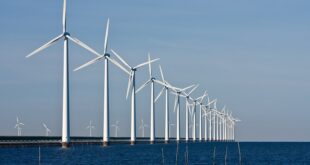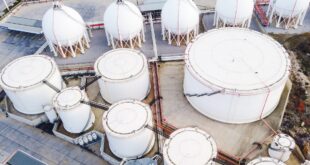The EIA reports that delays at the Panama Canal because of low water levels are causing very large gas carrier (VLGC) rates to reach record highs, increasing the cost of shipping LPG.
The Panama Canal is a major energy transit point, and water levels at its crucial Gatún Lake were below the 10-year (2013–2022) range in July and August 2023. According to the Panama Canal Authority (APC), water levels are the lowest since at least 1995 – the APC publishes no earlier data. The APC forecasts water levels at Gatún Lake to remain below the 10-year range through October and November.
Gatún Lake is the artificial lake that vessels transit between Atlantic and Pacific locks and holds the water supply needed to power and operate the lock systems. In response to the low water levels, the APC enacted a series of water-saving measures to try to decrease the effects the extended dry season and lower-than-normal precipitation are having on the Panama Canal.
VLGC rates have reached record highs for two of the three benchmark routes due to these delays at the Panama Canal. Rates for VLGCs, which carry primarily propane (and to a lesser extent, butane), are highly seasonal. The rates, which represent the cost of shipping per ton, typically increase in the winter when demand for propane as a heating fuel is greatest and decrease in the summer when heating demand subsides.
Petrochemical demand for propane as a feedstock also affects VLGC rates. Higher demand for US propane in East Asia is also contributing to the delays at the Panama Canal because increased vessel demand on this route creates a larger chokepoint. VLGC rates on the Houston–Chiba route, which uses the Panama Canal, reached US$235/t for the week ending 22 September 2023, the highest since at least 2016, when rates were first published. Rates are also increasing because of a widening Houston–East Asia arbitrage.
Because of transit restrictions arising from low water levels, the number of vessels allowed to transit the canal was limited to 32 per day on 30 July 2023, down from its typical 36, with 10 slots allocated for the Neopanamax locks and 22 slots for the Panamax locks. The transit restrictions have resulted in long delays; and in August more than 160 vessels waited to transit the canal. In August, Neopanamax sized ships traveling southbound waited up to 18 days and those traveling northbound waited up to 17 days. Ships waited for up to 18 days traveling southbound and northbound on the Panamax locks. The unpredictability of waiting days has required that some vessels, especially VLGCs, return empty (ballast) from East Asia back to the US Gulf Coast via alternative routes such as the Suez Canal or around the Cape of Good Hope, according to ship tracking data.
The Panama Canal is important for trade between the US and East Asia and the west coast of South America. Vessels carrying petroleum products, hydrocarbon gas liquids (HGLs), and chemicals make up one-third of trade transiting the canal, with chemical tankers making the most transits and HGL vessels (including VLGCs and VLECs) carrying the most volumetric cargo. Nearly all HGL trade through the Panama Canal travels from the US Gulf Coast to Asia. Propane accounts for nearly 60% of US HGL exports, and US ethane and butanes exports each account for 17% of the share of exports. In 2022, the top destinations for US Gulf Coast exports of propane were Japan, China, and South Korea, and the top destination for butanes was China, according to Vortexa. VLGCs account for nearly 83% of the propane and butane trade that transit the canal. US ethane exports are mostly fixed on long-term supply contracts, with most exports going to China and India on VLECs. The VLECs that make regular voyages to China take the Panama Canal, and the ones going to India take the Suez Canal.
Petroleum product tankers carrying distillate, gasoline, and jet fuel typically cross the Panama Canal via the smaller, older Panamax locks in ships that are specially designed to cross the Panamax locks in terms of draft, beam (width), and length. Most US clean petroleum product exports transit through the Panama Canal from the US Gulf Coast and arrive in regions such as the west coast of South America and Central America using Long Range 1 or Medium Range vessels. Commonly used vessels to transport crude oil are too large to use the expanded Panama Canal. Instead, greater volumes of US crude oil exports are more likely to go to destinations in Asia through the Suez Canal or around the Cape of Good Hope and to destinations in Europe using transatlantic routes.

 Iran Energy News Oil, Gas, Petrochemical and Energy Field Specialized Channel
Iran Energy News Oil, Gas, Petrochemical and Energy Field Specialized Channel



